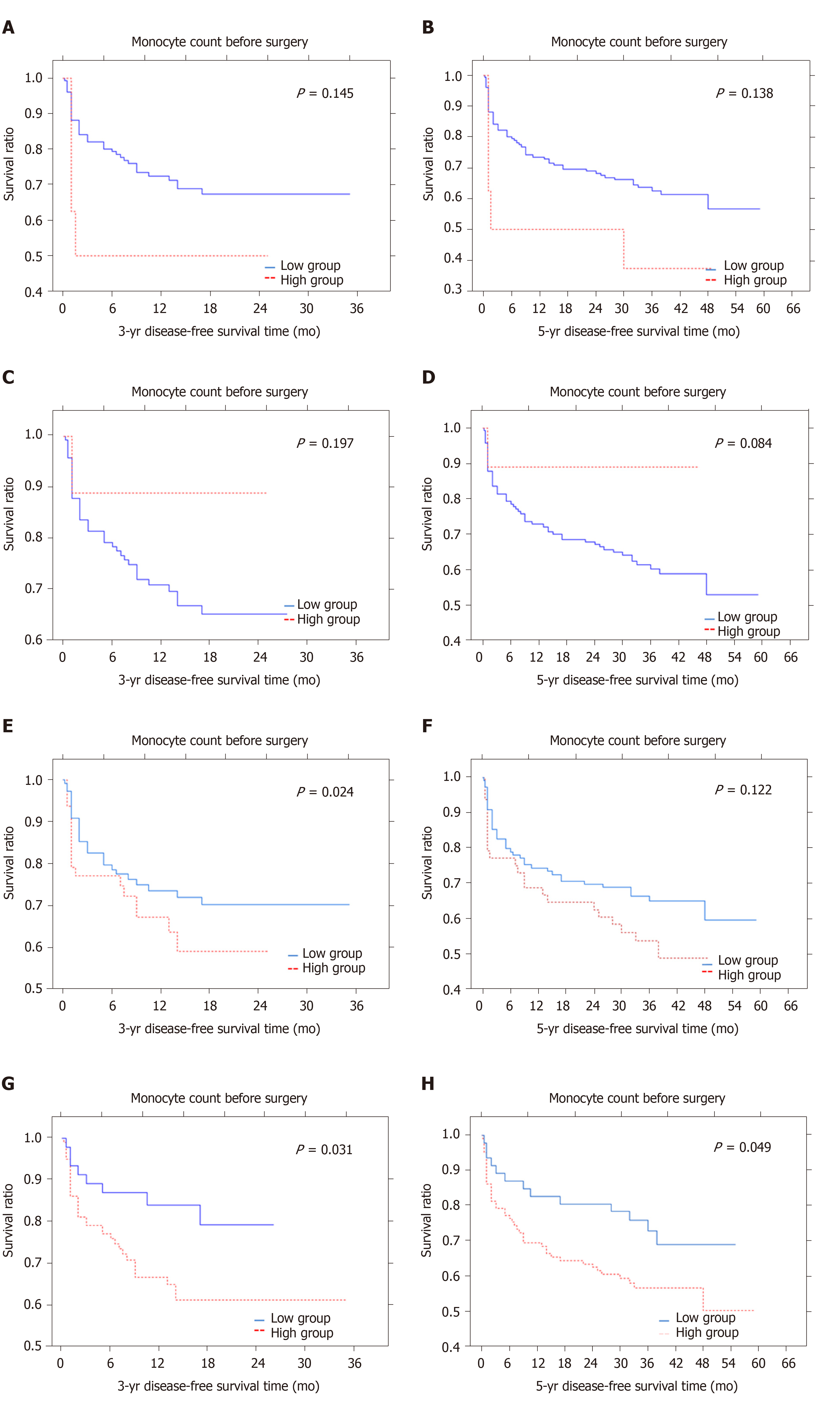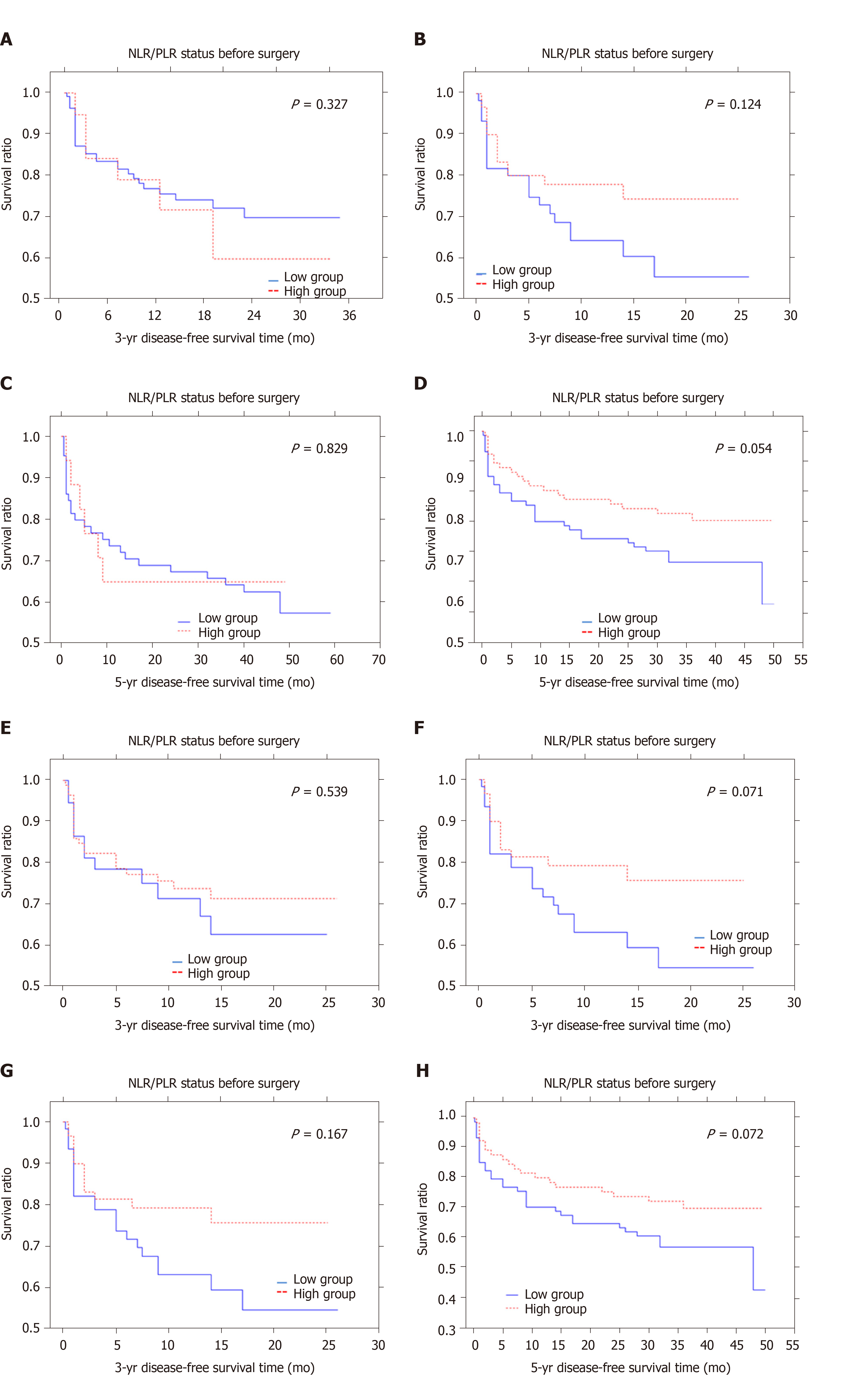Copyright
©The Author(s) 2020.
World J Gastroenterol. Aug 21, 2020; 26(31): 4639-4655
Published online Aug 21, 2020. doi: 10.3748/wjg.v26.i31.4639
Published online Aug 21, 2020. doi: 10.3748/wjg.v26.i31.4639
Figure 1 Three- and five-year disease-free survival rates according to monocyte count and monocyte to lymphocyte ratio in colorectal cancer patients, before and after surgery, respectively.
Kaplan-Meier curves were used to identify factors for colorectal cancer survival. A and B: Monocyte count before surgery [3- and 5-yr disease-free survival (DFS)]; C and D: Monocyte count after surgery (3- and 5-yr DFS); E and F: Monocyte to lymphocyte ratio before surgery (3- and 5-yr DFS); G and H: Monocyte to lymphocyte ratio after surgery (3- and 5-yr DFS).
Figure 2 Three- and five-year disease-free survival rates according to neutrophil-to-lymphocyte ratio and platelet-to-lymphocyte ratio status and platelet and neutrophil-to-lymphocyte ratio status in colorectal cancer patients, before and after surgery, respectively.
Kaplan-Meier curves were used to identify factors for colorectal cancer survival. A and B: Neutrophil-to-lymphocyte ratio and platelet-to-lymphocyte ratio status before surgery [3- and 5-yr disease-free survival (DFS)]; C and D: Neutrophil-to-lymphocyte ratio and platelet-to-lymphocyte ratio status after surgery (3- and 5-yr DFS); E and F: Platelet and neutrophil-to-lymphocyte ratio status before surgery (3- and 5-yr DFS); G and H: Platelet and neutrophil-to-lymphocyte ratio status after surgery (3- and 5-year DFS).
- Citation: Jakubowska K, Koda M, Grudzińska M, Kańczuga-Koda L, Famulski W. Monocyte-to-lymphocyte ratio as a prognostic factor in peripheral whole blood samples of colorectal cancer patients. World J Gastroenterol 2020; 26(31): 4639-4655
- URL: https://www.wjgnet.com/1007-9327/full/v26/i31/4639.htm
- DOI: https://dx.doi.org/10.3748/wjg.v26.i31.4639










